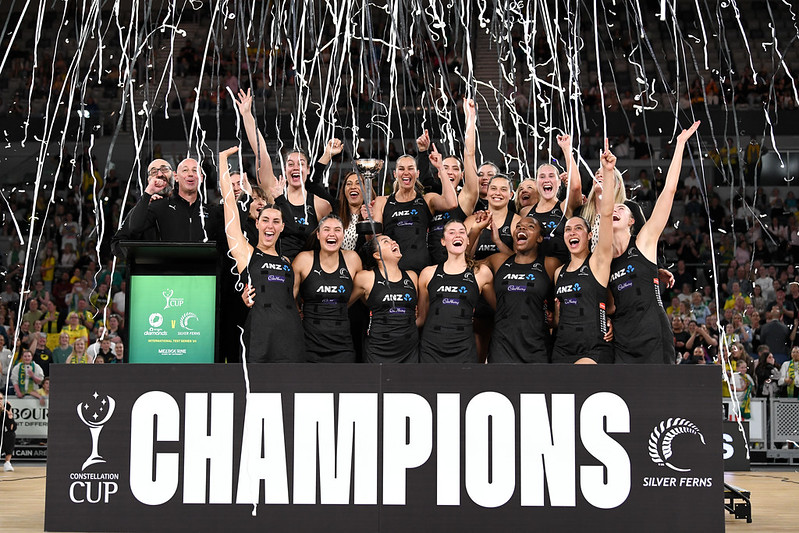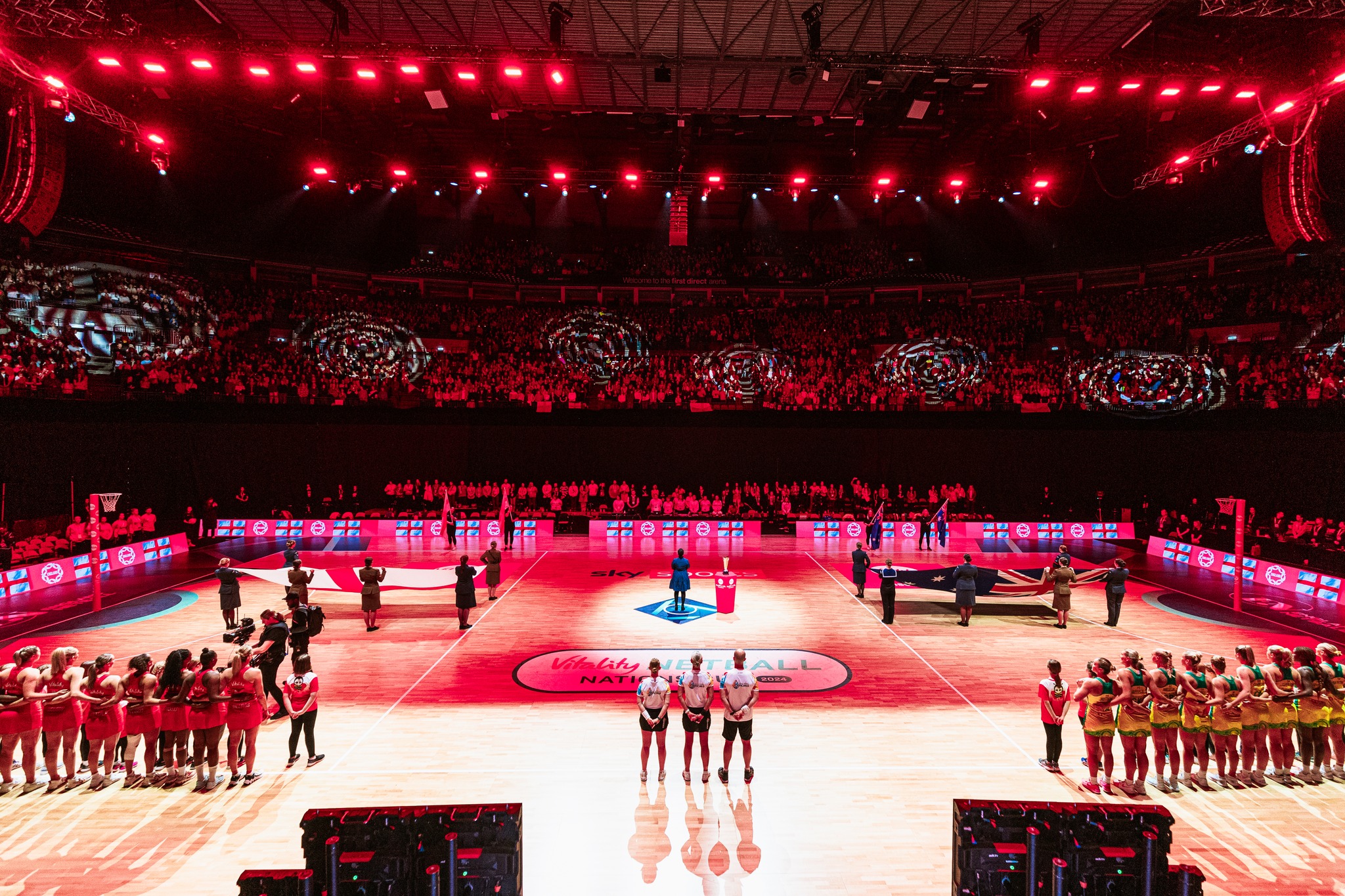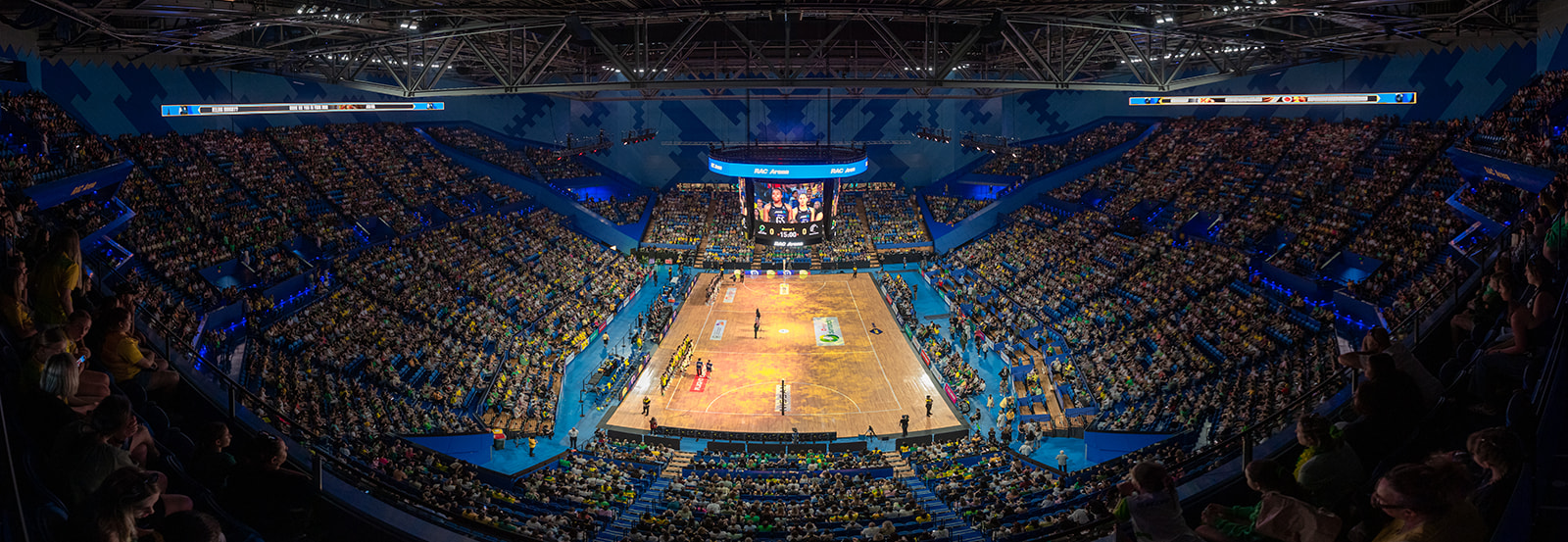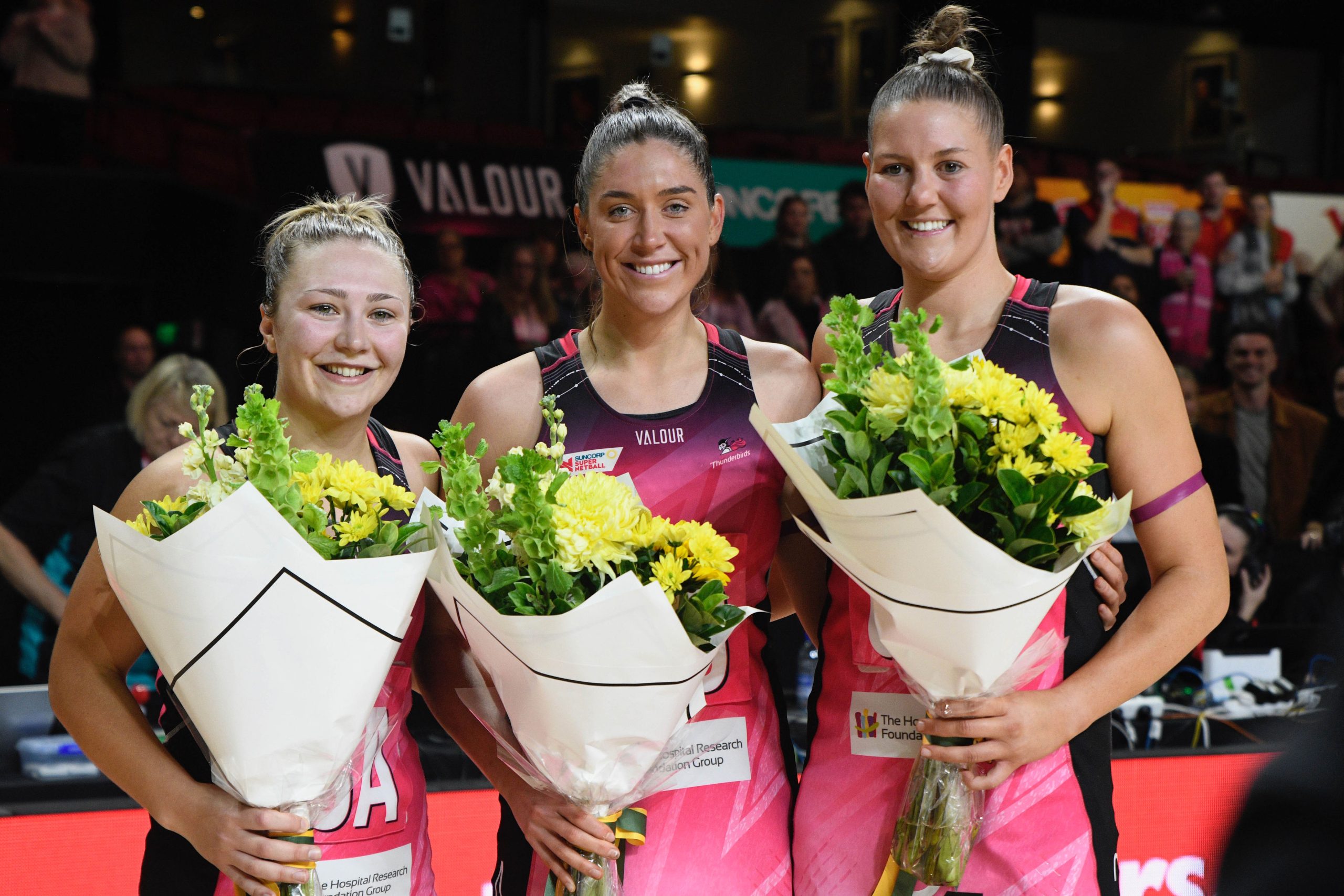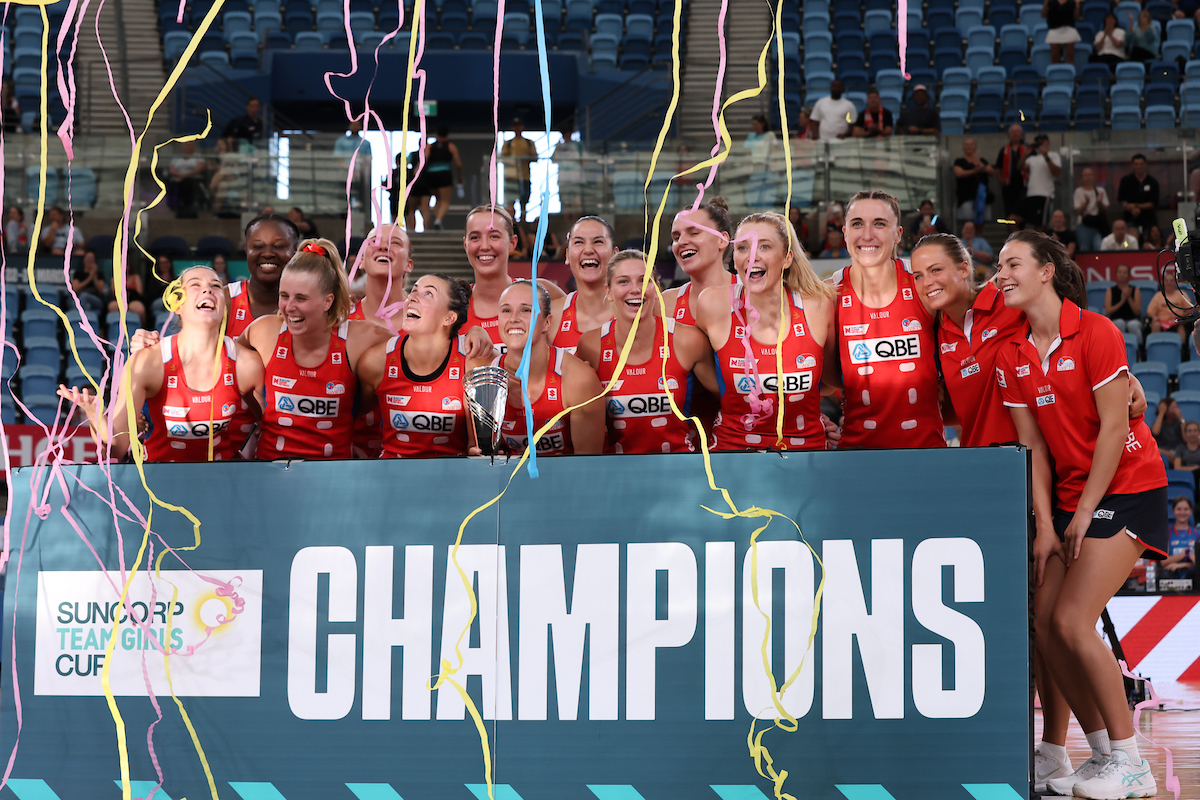Cover Image: Aliesha Vicars
“New Zealand Silver Ferns win the Constellation Cup, 3-1”

The Silver Ferns wrap up the Constellation Cup in test 3, 2024. Image: Clinton Bradbury/Bradbury Photography
RESULTS
Test 3 – Perth: NZ 61 def AUS 43
AUS
Sophie Garbin 26/28 (93%)
Sophie Dwyer 14/20 (70%)
Cara Koenen 3/7 (43%)
Total: 43/55 (78.2%)
NZ
Grace Nweke 47/50 (94%)
Ameliaranne Ekenasio 14/17 (82%)
Total: 61/67 (91%)
MVP: Kate Heffernan (20 Centre Pass Receives, 5 Goal Assists, 3 Pickups, 1 Intercept)
Test 4 – Melbourne: Aust 63 def NZ 50
AUS
Sophie Garbin: 36/36 (100%)
Keira Austin: 27/30 (90%)
Total: 63/66 (95%)
NZ
Grace Nweke: 25/26 (96%)
Ameliaranne Ekenasio: 11/14 (77%)
Amelia Walmsley: 9/11 (82%)
Maia Wilson: 5 /6 (83%)
Total: 50/57 (88%)
MVP: Kiera Austin (16 Assists, 23 Feeds, 23 Centre Pass Receives, 2 Gains)
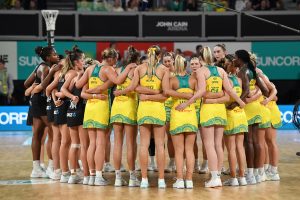
Diamonds and Silver Ferns 2024. Image Aliesha Vicars.
MATCH SUMMARIES
Test 3 – RAC Arena (Perth/Boorloo)
Dominant and clinical, the New Zealand Silver Ferns brushed aside a closely contested first half to dominate the Australian Diamonds by a whopping 18 goals and take the Constellation Cup for the third time in 14 attempts, 61-43.
The Australian Diamonds’ start was much stronger in test 3, as their attacking end used better ball speed to break the defensive structure of the Ferns. The defensive trio of Jamie Lee Price, Sarah Klau and Courtney Bruce worked hard to smother their opponents, and picked up four gains in the first quarter alone. It forced some uncharacteristic turnovers from the Silver Ferns as they had to work hard to penetrate their midcourt.
However, the Silver Ferns went into another gear during the second half and broke the Diamonds’ attacking and defensive structures into pieces. On attack, Maddy Gordon and Kimiora Poi increased their speed to create clear passing lines, allowing for Grace Nweke and Amelieranne Ekenasio to draw the defence into one-on-one battles and for easy feeds to go in.
Across 60 minutes of netball, the defensive quartet of Maddy Gordon, Kate Heffernan, Karin Burger and Kelly Jackson outclassed the world champion’s attacking end. They generated 22 turnovers, 13 deflections, 11 gains, 6 intercepts and 3 defensive rebounds, while their downcourt transition was unstoppable.
Despite playing at wing defence, MVP Kate Heffernan’s attacking game was a standout as she had the highest centre pass receives on court (20), 5 goal assists and generated zero turnovers despite all her feeds coming from the transverse line and beyond. She combined this with 2 deflections, 1 gain, 1 intercept and sent Captain Liz Watson to the bench for the second test in a row.
One of the few bright spots for Australia, was Georgie Horjus becoming Diamond number 193.
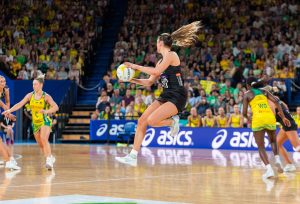
Kate Heffernan’s long court transition was brilliant. Image: Clinton Bradbury/Bradbury Photography
Test 4 – John Cain Arena (Melbourne/Narrm)
How does a 31 goal turnaround happen? We’re not sure, but the Australian Diamonds were able to finish the series on a high note, putting together a strong performance to defeat the Silver Ferns by 13 goals (63-50). It was a huge turnaround after three disappointing games, with some of the Diamonds’ big names stepping up.
The Silver Ferns opted to try different combinations down the attacking end to kick off Test 4. Amelia Walmsley got the start in goal shooter, supported by Silver Ferns captain Ameliaraane Ekenasio out at goal attack. With the pair in the circle and less dominance in the air via Grace Nweke, the Ferns opted to work the ball around using shorter passes until it got to the shooters in the ring.
With scores level at the start of the second term, the Silver Ferns brought on Nweke for a more direct option to post, but it was the Diamonds who went up a gear. Sunday Aryang took over the goal defence bib, and helped to force the turnovers that Australia were chasing. She partnered smoothly with former Fever teammate Courtney Bruce, with the pair able to reduce the influence of the New Zealand shooters and finish with four gains apiece. To be able to beat the Silver Ferns so convincingly with Nweke in the line for 45 minutes will do wonders for the Australian defenders’ confidence.
Kate Moloney, who returned to the match day squad, was a real leader in the midcourt as she lifted teammates around her. She was first to every loose ball, especially in the attacking third, while also controlling the middle channel.
Sophie Garbin and Keria Austin set the tone early in attack, working their combination smoothly. Garbin was on fire under the post, shooting at 100 per cent accuracy, while Austin’s performance – shooting 27/30 and pulling in two gains – saw her named MVP of the match.
The Silver Ferns managed to get court time into all of their twelve players, including crucial alternative options at goal shooter and attack. It was Ekenasio’s benching for 26 minutes of the game that perhaps had the most impact on her side’s form. While Maia Wilson and Amelia Walmsley were both viable alternatives, Ekenasio is simply a class above most players.

Sophie Garbin gives herself space under the post in test 3. Image: Clinton Bradbury/Bradbury Photography
WHAT WORKED
In test three the Silver Ferns showed the value of having a strong game plan and being able to stick to it. Wing defence Kate Heffernan took 20 centre pass receives via the back door, more than any other player on court, allowing her side to flood forwards in attack. She, along with goal defence Karin Burger and centre Maddy Gordon, were also particularly active in setting up sublime full court transition. They were able to move the ball far too quickly, with minimal opposition, to allow the Diamonds circle defenders any time to set up against them.
In the fourth test, the Silver Ferns were still able to go via their wing defence on 15 centre pass occasions, but were made to work much harder for those opportunities. Australia were also able to apply more defensive pressure against long court transition, slowing the ball down and giving their defenders more of a chance to look at the ball.
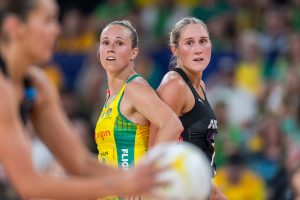
Maddy Gordon (right) has cemented herself as the Silver Ferns first choice centre. Image: Clinton Bradbury/Bradbury Photography
Team statistics below outline some of the biggest differences between tests three and four.
The first one to note is shooting percentage. While the Silver Ferns were relatively consistent (3% reduction in accuracy), Australia lifted their shooting by 18% for an additional 20 goals. Not only were the shooters more accurate, but their supply was increased via eight less turnovers.
Another key was centre pass conversion. In the third test match, New Zealand dominated this stat converting 81% of their opportunities compared to Australia’s 70%. There was a huge swing in test four, with Australia bumping their percentage up to 86 (positive swing of 16%) and New Zealand faltering at 68 (negative swing of 13%). This both increased Australia’s shooting volume while simultaneously decreasing New Zealands.
It’s also worth noting that the two sides almost swapped their number of gains. This becomes of significance if gained ball can be converted at the other end. It’s an area that the Silver Ferns have worked hard on, while Australia languished at 43 and 45% across the two tests, far below their usual standards.
Finally, to turnovers. Both sides pride themselves on possession, and have given up sparse amounts of ball in recent years. The Diamonds would have been frustrated at offering 22 opportunities to their opposition in Test 3, and far happier with just 14 in test four. The Silver Ferns also had a reversal of fortune, although not as wildly variable as the Diamonds.
| Aust Test 3 | Aust Test 4 | SFs Test 3 | SFs Test 4 | |
| Shooting % | 78% | 96% | 91% | 88% |
| Total gains | 7 | 11 | 11 | 8 |
| Centre pass conversion % | 70% | 86% | 81% | 68% |
| Gain to goal conversion % | 43% | 45% | 73% | 63% |
| Turnover to goal conversion % | 79% | 75% | 38% | 75% |
| Turnovers | 22 | 14 | 15 | 20 |
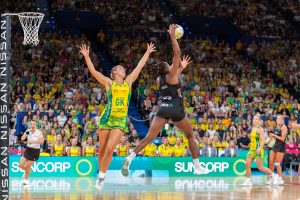
Grace Nweke consistently shot at high accuracy. Image: Clinton Bradbury/Bradbury Photography
WHAT WAS CHALLENGING
For both coaches, the biggest question will be how a 31 goal turnaround happened between tests 3 and 4. Such wild reversal of fortunes is unacceptable at elite level between sides that rarely have more than a few goals between them. The challenge will be minimising the poor outings, and finding ways to maintain standards for longer.
Have Australia or New Zealand done enough to test their depth at this point in the four year cycle? It’s a question that will be asked of both sides.
New Zealand, stung by both lowering their colours to England and their world ranking, went with a mostly unchanged line-up against Australia across 3 ½ tests. They played incredible netball, but it begs the question of what they will look like, particularly if Ekenasio or Nweke should be unavailable. With the top seven running out most of the four matches, there would have been some undoubtedly tired bodies, but that will be even worse in the tournament conditions of a Commonwealth Games or World Cup.
So having found a dominant seven after some trial and error, how will they build depth, and protect their superstars from fatigue across a long tournament?
Australia’s situation is almost at the opposite end of the spectrum from New Zealand. They’ve been incredibly successful in recent years, but relied heavily on some familiar faces. With several retirements, the forced inability to build depth at goal shooter, and losing four of their last six matches, the world champions are suddenly looking vulnerable. Have they done enough to ensure that any changing of the guard is seamless? Would the Roses and Constellation Cup series have been a perfect time to put more court time into some of the up and coming players and see how they challenge incumbents?
It’s interesting to note that the second test marked the first time seasoned defender Courtney Bruce did not make the starting 7 lineup in a Constellation Cup match since October 16, 2019. t was also the first time she hadn’t played the full 60 minutes in a Constellation Cup test since test three of the same series.
As for Diamonds captain Liz Watson, test two was also the first time she didn’t play the full 60 minutes in a Constellation Cup match since test four, October 27, 2019. Still the world’s best in her position, Watson has been a mainstay in the green and gold but so dominant is she, that little has been done to trial alternative options against the higher ranking nations.
One thing is certain – there’s very little penciled in on the international calendar between now and the 2026 Commonwealth Games. If Australia is to maintain their title, and New Zealand to overcome their poor showing at the last event, there’s a lot to be done in a limited amount of time.
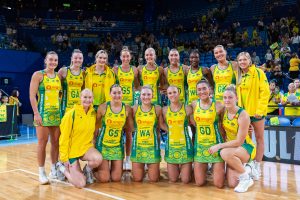
Australian Diamonds Constellation Cup squad of 2024 – did they put enough time into their bench players and wider squad? Image: Clinton Bradbury/Bradbury Photography
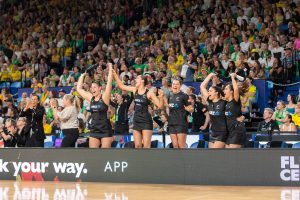
The Silver Ferns bench players celebrating the full time whistle in Perth. Another group that received little court time. Image: Clinton Bradbury/Bradbury Photography
KEY PLAYERS
While Grace Nweke justifiably deserves all the plaudits she receives for her work under the post, captain Ameliaranne Ekenasio also proved how essential she is to her sides success. Ekenasio powers through an enormous amount of work outside the circle, while her high arching and accurate shot is close to untouchable. It’s perhaps no coincidence that the Ferns had their equal worst quarter of the series when she was on the bench.
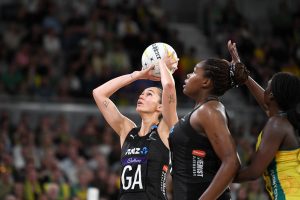
Ameliaranne Ekenasio has a massive influence as captain and goal attack for the Silver Ferns. Image Aliesha Vicars.
Kate Heffernan, and her combination across the defensive transverse line with Karin Burger, has been crucial to the Ferns success all series, and never more so than in the third test. Heffernan took 20 centre pass receives, more than anyone on court, while she also chimed in with six feeds and an intercept, and sent Liz Watson to the bench. Heffernan lowered her colours to Watson in the fourth test, but had the better of her across their three earlier meetings.
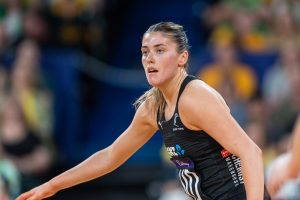
Kate Heffernan was one of the keys to the Silver Ferns success and received MVP in test 3. Image: Clinton Bradbury/Bradbury Photography
When the Diamonds needed someone to step up in the fourth match it was Kate Moloney. Playing in front of her home crowd, the Victorian rose to the occasion. She provided much needed energy and spark on court, while her ability to pounce on loose balls and get around her teammates was noticeable. It was a perfect response from the Vixen’s captain, after being left out of the game day 12 for the test in Perth.
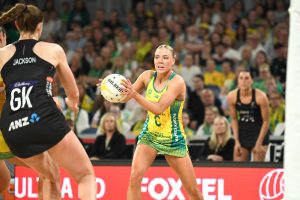
Kate Moloney made an impact at centre. Image Aliesha Vicars.
The Diamonds were lacking in defence across the first three tests, with Nweke and Ekenasio running riot in the goal circle. Enter Sunday Aryang, partnered with Courtney Bruce was able to work to nullify the impact of Ekenasio which forced the Silver Ferns to bring Walmsley back on into goal attack. While Nweke was still strong when she was on, the work that Aryang did out the front allowed Bruce to have more of a crack at winning ball back.
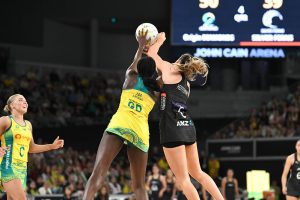
Sunday Aryang was called for contact, despite appearing to have clean possession of the ball, so this didn’t count as one of her four gains. Image Aliesha Vicars.

